Wetland Diary 31 August 2006
Previous Entry | Wetland Index | Next Entry
This trip was dominated by young Marsh Frogs (Rana ridibunda) and the aerobatics of Migrant Hawkers (Aeshna mixta). The weather was a mixture of sunshine and cloud, and not particularly warm for the time of year (August as a whole was cool in London).
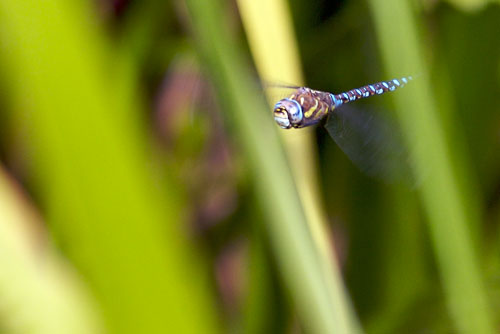
Flying Male Migrant Hawker (Aeshna mixta). Shutter was 1/400 second.
There were a couple of groups of hawker dragonflies I encountered on my way to the Wildside part of the reserve. With plenty of patience I managed to get two decent photographs of these very fast moving insects. I believe they are male Migrant Hawkers (Aeshna mixta), similar to the Common Hawker (Aeshna juncea), but the blue eyes, and lack of yellow costa (vein running along the leading edge of the wing) convince me they are the Migrant species. Note how even at a shutter speed of 1/400 second the wings are very blurred; dragonflies really are impressive fliers, and can fly in all directions at high speed.
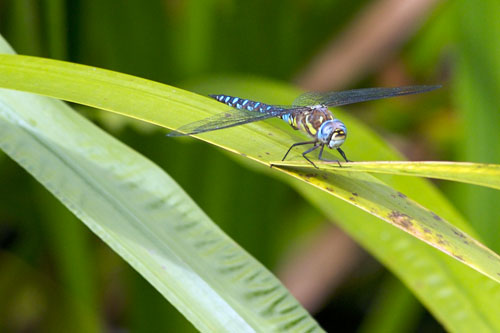
Male Migrant Hawker (Aeshna mixta).
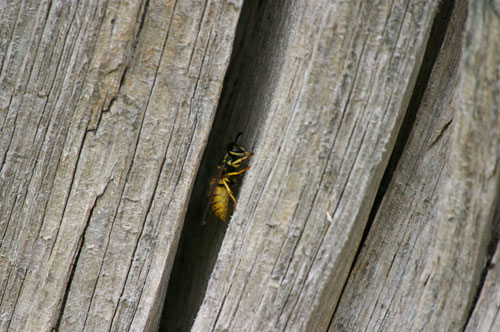
Wasp (Vespula sp.) chewing wood.
By the same pond as the Migrant Hawkers, wasps (Vespula sp.) were chewing wood from a dead tree stump. I only had my long lens with me, no macro, so this photograph is as close as I could get.
Having seen no amphibians on my prior two trips, I was thrilled to find the amphibian pond area teaming with frogs.
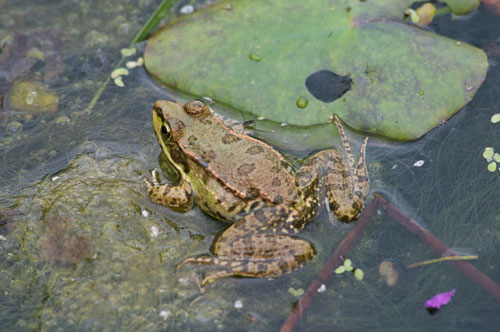
Young Marsh Frog (Rana ridibunda) and Pond Skater (Gerris lacustris?).
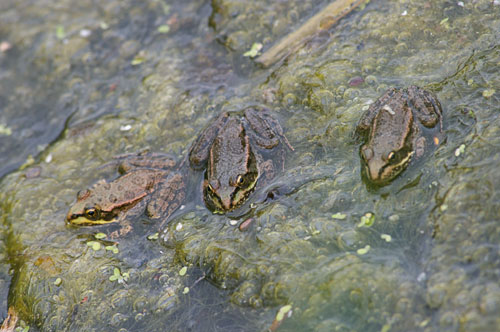
Trio of Young Marsh Frogs (Rana ridibunda) (picture slightly
obscured by out-of-focus reed).
All the frogs seemed to be young Marsh Frogs (Rana ridibunda), with none of the Common Frogs (Rana temporaria) in evidence at all. While the Marsh Frogs are certainly attractive (and have a great Latin name meaning laughing frog), the lack of Common Frogs was a little worrying. The young Marsh Frogs were already very large (compared to newly metamorphosed Common Frogs), and have rougher skin than the Common species. Introduced to Walland Marsh, Kent, in 1935, the Marsh Frogs have certainly made themselves at home at the Wetland Centre; what this means for the native Common Frogs is unclear.
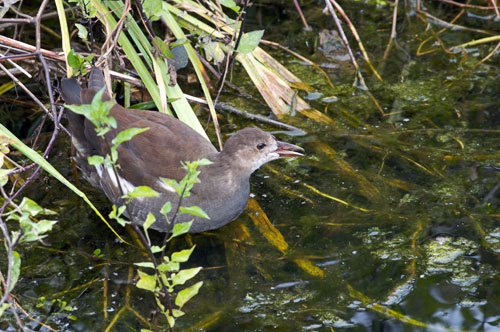
Young Moorhen (Gallinula chloropus).
Each time I've visited the Centre in the last month or so, a young Moorhen (Gallinula chloropus) has been there in the overgrown area by the edges of one of the channels. At the approach of people it tends to break cover and enter the water, as seen here.
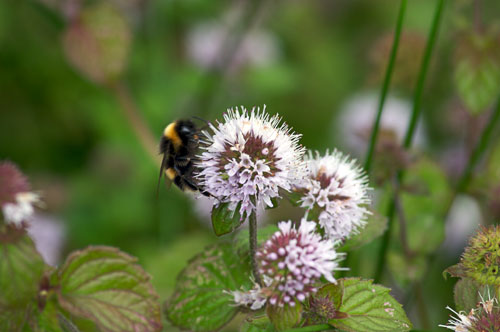
Buff-tailed Bumblebee (Bombus terrestris)
drinking nectar from Water Mint (Mentha aquatica).
Water Mint (Mentha aquatica) and Horsetails (Equisetum sp.) could be found in abundance in the shallow channels. I photographed what I think is a Buff-tailed Bumblebee (Bombus terrestris) feeding on the nectar of a mint flower. This could be a White-tailed Bumblebee (Bombus lucorum), it's hard to be sure at this angle.
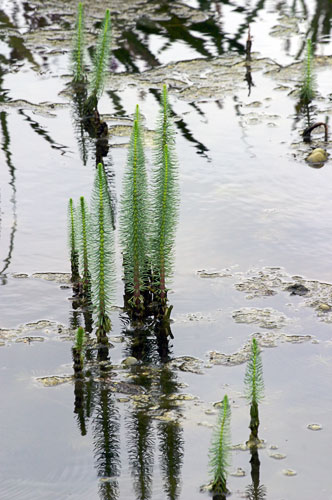
Horsetail (Equisetum sp.).
I didn't have enough time on this trip to look at the ducks, with wintering species apparently already beginning to arrive. I'll definitely make some time for the ducks on my next trip.
Previous Entry | Wetland Index | Next Entry